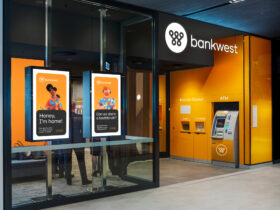Introduction
CBA, In the constantly changing world of finance, where technology and customer standards are always changing, the Commonwealth Bank of Australia (CBA) is a great example of how to be flexible, creative, and focused on customers. With a history that goes back more than 100 years, CBA has not only stayed current but also done well in a very competitive field. This piece looks at how CBA has changed over time, as well as its key strategies, technological advances, and its role as a pioneer in shaping the modern banking world.
Getting started and the first few years: Building Trust
The Commonwealth Bank of Australia was set up in 1911 with the goal of being the country’s national bank and offering banking services to everyone in Australia. Its first goal was to build trust and security in the financial system, which set the stage for its later success. Over time, CBA became a well-known word that people associated with reliability and good money management.
Online banking was one of the first digital changes.
Early on, CBA saw the promise of digital channels as technology began to change industries. At the end of the 1990s, the bank started offering online banking, so users could log in to their accounts and do business over the Internet. This was a big step toward making things easier and more accessible for CBA’s customers, and it set the stage for the bank’s bigger digital transformation.
Putting the customer first: Introducing NetBank and Going Further
With the launch of NetBank, a revolutionary online banking tool, in 1999, CBA showed that it cared about its customers. At the time, NetBank was a relatively new way for people to handle their money from the comfort of their own homes. The platform’s easy-to-use design and wide range of features helped CBA become known as a leader in digital banking services.
Also Read…fxfinancer-com
The CommBank app was the start of a revolution in mobile banking.
With the release of the CommBank app in 2011, CBA showed that it was still interested in new ideas. This move was a game-changer because it brought banking services to customers’ smartphones. Now, customers can use their phones to make purchases, check their account amounts, and even pay bills. The app was widely used because it was easy to use and had strong security features. This helped cement CBA’s place as a leader in mobile banking solutions.
Data and analytics are changing how people interact with businesses.
CBA was successful in the digital world because it used data and analytics in a smart way. The bank used information about its customers to personalize its offerings, make its marketing efforts more effective, and improve its services. By using the power of big data, CBA not only made the customer experience better, but it also gave itself a competitive edge by being able to predict and meet customer wants.
Collaboration in Fintech: Embracing Innovation
CBA jumped at the chance to work together with fintech startups because they saw the possibility for doing so. These partnerships led to the creation of new ideas like peer-to-peer payment tools, robo-advisory services, and projects based on the blockchain. By using the speed and creativity of fintech partners, CBA made sure it stayed at the top of the financial industry’s technological advances.
Focus on the future: Banking for a better world
CBA’s operations became more and more clear of its commitment to sustainability and business responsibility. The bank started doing things that were good for the earth, helped people learn about money, and put money into projects that used renewable energy. CBA’s focus on sustainability not only appealed to people who cared about the world, but it also made the bank look like a responsible part of the global financial ecosystem.
Regulatory Landscape and Cybersecurity: Meeting Challenges
Even though CBA had an amazing journey, it had its share of problems. Changes in regulations and the need to follow them meant that it had to make big changes to how it did business. Also, the growing risk of cyberattacks showed how important it was to protect customer information and cash assets. CBA’s proactive approach to dealing with these problems showed once again how much it cares about keeping the trust of its customers and other partners.
Conclusion: A shining example of good banking
The fact that the Commonwealth Bank of Australia has gone from being a traditional institution to a leader in digital banking shows how committed it is to innovation, customer happiness, and social progress. Through smart investments in technology, a constant focus on customer needs, and a commitment to doing things the right way, CBA has not only survived the storms of change but has also come out stronger and set a standard for the global banking industry. As the financial world continues to change, CBA’s history shows how a strong commitment to innovation and putting customers first can lead to lasting success in a world that is always changing.
Also Read…. the-history-of-woolworths-online-from-storefronts-to-the-top-of-e-commerce













